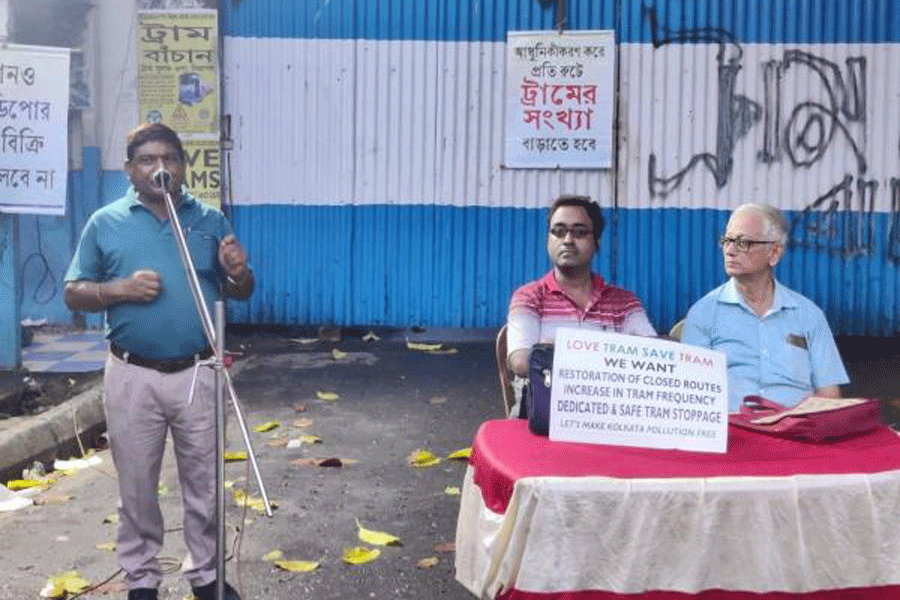A group of tram enthusiasts came together at the Rajabazar tram depot in Sealdah on Saturday to protest the state transport department’s decision to withdraw tram services along a route that connects several schools, colleges, universities and markets in central Kolkata.
The 15/12 tram route linked Sealdah station to Surya Sen Street and Mahatma Gandhi Road, and went up to the approach to Howrah Bridge.
In April 2021, the tram service on this route was stopped because of repair work of the Brabourne Road flyover. The repair was completed after Durga Puja in 2022 but the service was not restored, the protesters alleged.
A section of tram users said this route was popular among students of Rajabazar Science College, Taki Balika Vidyalaya and Victoria Institution, besides students of Kolkata and Presidency universities. Traders of College Street, Chitpore and Burrabazar would carry their goods in the tram at a much lower cost than other modes of transport.
“All the infrastructure required to run trams on this route, like overhead wires and the tracks, are ready. If the transport department wants to, it can resume the service within a few hours,” said Debasish Bhattacharyya, the president of the Calcutta Tram Users Association.
“But for some unknown reason, the government has decided against resuming tram service on this route.”
In a year that marks 150 years of trams in Kolkata, the transport department has curtailed services along several routes and completely stopped it in many others. Over 116km of tram tracks exist in the city but trams operate on only 33km of them.
There were six big tram depots and only two of the bigger ones are functional. The landed properties of many depots have been sold to private parties where housing complexes are coming up.
“These depots were monetised as part of the state government’s policy to help the transport department reduce its subsidy intake from the finance department,” said a senior official of the transport department.
“The department would receive an annual subsidy of around Rs 600 crore from the government and the land monetisation was aimed at bringing this amount down,” the official said.
From a little over 25 routes operational in 2017, trams now run only on three routes — 5 (Shyambazar-Esplanade), 25 (Ballygunge-Esplanade) and 24/29 (Ballygunge-Tollygunge).
With trams disappearing, Calcutta High Court intervened last month and directed the state government to set up an expert committee for the preservation of the “heritage transport”.
“It is very easy to close down a heritage transport. But considering the sentiments of the people of the city, the state should try its best to preserve the pollution-free transport system,” Chief Justice T.S. Sivagnanam said whilehearing a public interest litigation.
On Saturday, senior officials of the transport department said they have been celebrating trams as a unique mode of pollution-free transport.
“The Bengal government was the first to introduce the concept of a tram library in India. We have several tram rides organised to celebrate the history of trams,” said a senior official of the transport department.
“It’s not that the government is against running trams or that it doesn’t understand its heritage status. But there are some challenges and we have restricted the services along a few routes now,” the official said.
Having a library or a cafe on a tram is not the same as encouraging trams as a mode of transport, said tram enthusiasts.
